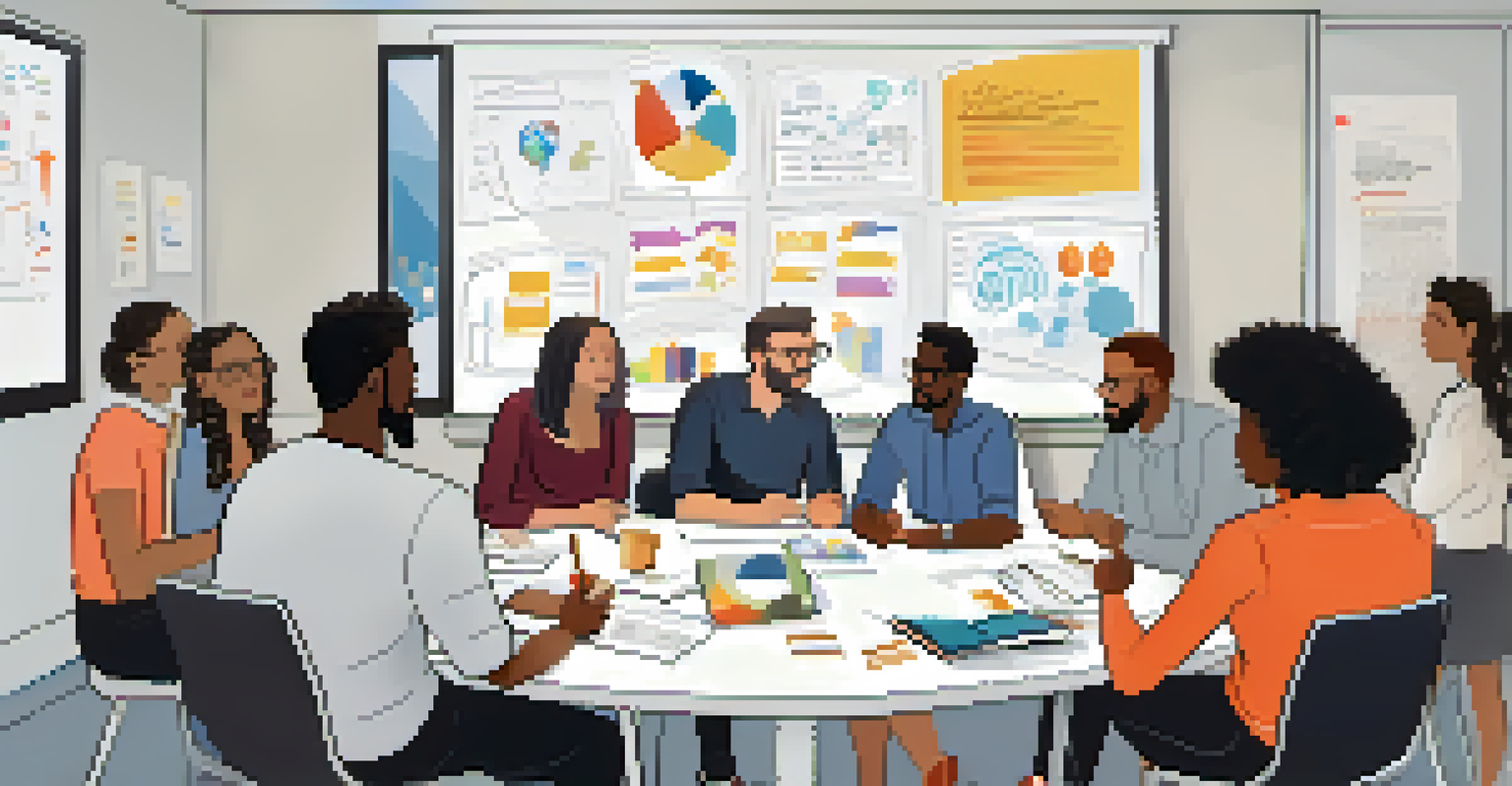The Role of Reflection in Microlearning Experiences

What is Microlearning and Why Does It Matter?
Microlearning refers to bite-sized learning experiences designed to deliver content in short bursts. This approach caters to our busy lifestyles, allowing learners to engage with material without feeling overwhelmed. Think of it like snacking; instead of a heavy meal that leaves you stuffed, you grab a few healthy bites throughout the day to keep your energy up.
We do not learn from experience... we learn from reflecting on experience.
The appeal of microlearning lies in its flexibility and accessibility, making it ideal for busy professionals and students alike. With the rapid pace of today’s world, traditional lengthy training sessions often fall flat. Microlearning fits perfectly into our on-the-go lives, enabling learning on demand.
However, simply consuming information isn’t enough. To truly benefit from microlearning, individuals must engage with the content through reflection, which is where the magic happens. This engagement can lead to deeper understanding, making the learning experience more impactful.
The Importance of Reflection in Learning
Reflection is the process of thinking critically about what you've learned and how it applies to your life. This practice encourages learners to connect new knowledge with their prior experiences, enhancing retention and understanding. Imagine reflecting on a lesson as polishing a gem; the more you work on it, the more it shines and reveals its true beauty.

In educational psychology, reflection is often highlighted as a key component of effective learning. It allows individuals to process their thoughts, clarify their understanding, and identify areas for improvement. By taking time to reflect, learners can solidify their grasp on the material and make it their own.
Moreover, reflection fosters a growth mindset, encouraging learners to embrace challenges and view failures as opportunities for growth. When reflection is integrated into microlearning, it transforms mere consumption of information into a meaningful learning journey.
How Reflection Enhances Microlearning Effectiveness
Integrating reflection into microlearning experiences can significantly boost their effectiveness. After completing a short module, taking a moment to ponder what you learned ensures that the information sticks. It’s like planting a seed; without nurturing it, it won’t grow, but with care and attention, it can flourish.
Reflection is the lamp of the heart. If it departs, the heart will have no light.
Reflection helps learners identify which concepts resonated with them and why, enabling them to personalize their learning. This personal connection boosts motivation and engagement, making learners more likely to revisit the material and apply it in real-life scenarios. For instance, if a learner reflects on how a new skill can improve their work performance, they’re more likely to adopt it.
Additionally, reflection can uncover gaps in understanding, prompting learners to seek out additional resources or revisit certain topics. This proactive approach not only deepens knowledge but also cultivates a lifelong learning habit.
Strategies for Incorporating Reflection in Microlearning
Incorporating reflection into microlearning doesn’t have to be complex. Simple strategies can make a world of difference. For example, at the end of each microlearning session, pose open-ended questions that encourage learners to think critically about the content. Questions like 'How can you apply this concept in your work?' promote deeper engagement.
Another effective strategy is to use reflection journals or digital platforms where learners can jot down their thoughts and ideas. This practice not only provides a space for personal expression but also serves as a valuable resource for future reference. Think of it as a personal treasure chest where learners can revisit insights they’ve gathered.
Finally, fostering a community of reflection can enhance the experience. Encourage learners to share their reflections in group discussions or online forums. This collaborative approach not only validates individual experiences but also opens the floor for diverse perspectives.
Measuring the Impact of Reflection in Microlearning
To understand the effectiveness of reflection in microlearning, it’s essential to measure its impact. Surveys and feedback forms can provide valuable insights into how reflection affects learning outcomes. By asking learners about their experiences, educators and organizations can gauge the effectiveness of their strategies.
Additionally, tracking performance metrics before and after implementing reflection can reveal trends in knowledge retention and application. For instance, if learners show improved results in assessments after engaging in reflective practices, it’s a clear indicator of success.
Qualitative data, such as learner testimonials, can also shed light on the value of reflection. Hearing firsthand accounts of how reflection has changed someone’s learning experience can be powerful and motivating for others.
The Challenges of Implementing Reflection
While reflection is beneficial, it’s not without its challenges. Some learners may resist the idea of taking time to think critically about their learning. They might feel pressed for time or unsure of how to articulate their thoughts. This resistance can be likened to trying to swim against the current; it takes effort to break through the initial barriers.
Moreover, educators and organizations may struggle to create a culture that values reflection. If reflection isn’t embedded in the learning process, it can easily be overlooked. It’s crucial to emphasize its importance and provide the necessary tools and support to encourage reflective practices.
Lastly, there’s the challenge of ensuring that reflection is meaningful and not just a box to tick. It’s essential to foster an environment where learners feel safe to share their thoughts and insights openly. Without this supportive atmosphere, reflection may feel forced rather than beneficial.
Looking Ahead: The Future of Reflection in Microlearning
As microlearning continues to evolve, the role of reflection will likely become increasingly significant. With advancements in technology, we can expect innovative ways to integrate reflection into learning experiences. For example, AI-driven platforms could analyze a learner's responses and tailor reflective prompts to enhance engagement.
Additionally, as more organizations recognize the value of continuous learning, reflection will play a crucial role in fostering a culture of growth. By encouraging employees to regularly reflect on their skills and knowledge, businesses can create a more agile and adaptable workforce.

Ultimately, reflection has the potential to transform microlearning from a passive experience into an active, engaging journey. By prioritizing reflection, we can empower learners to take ownership of their education and cultivate a lifelong love of learning.